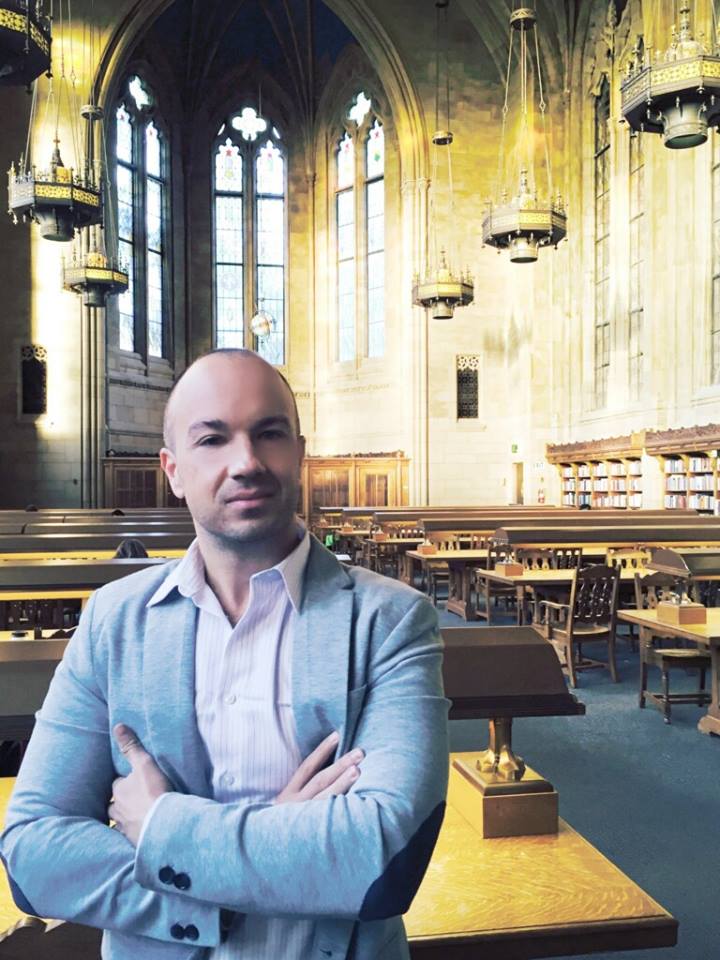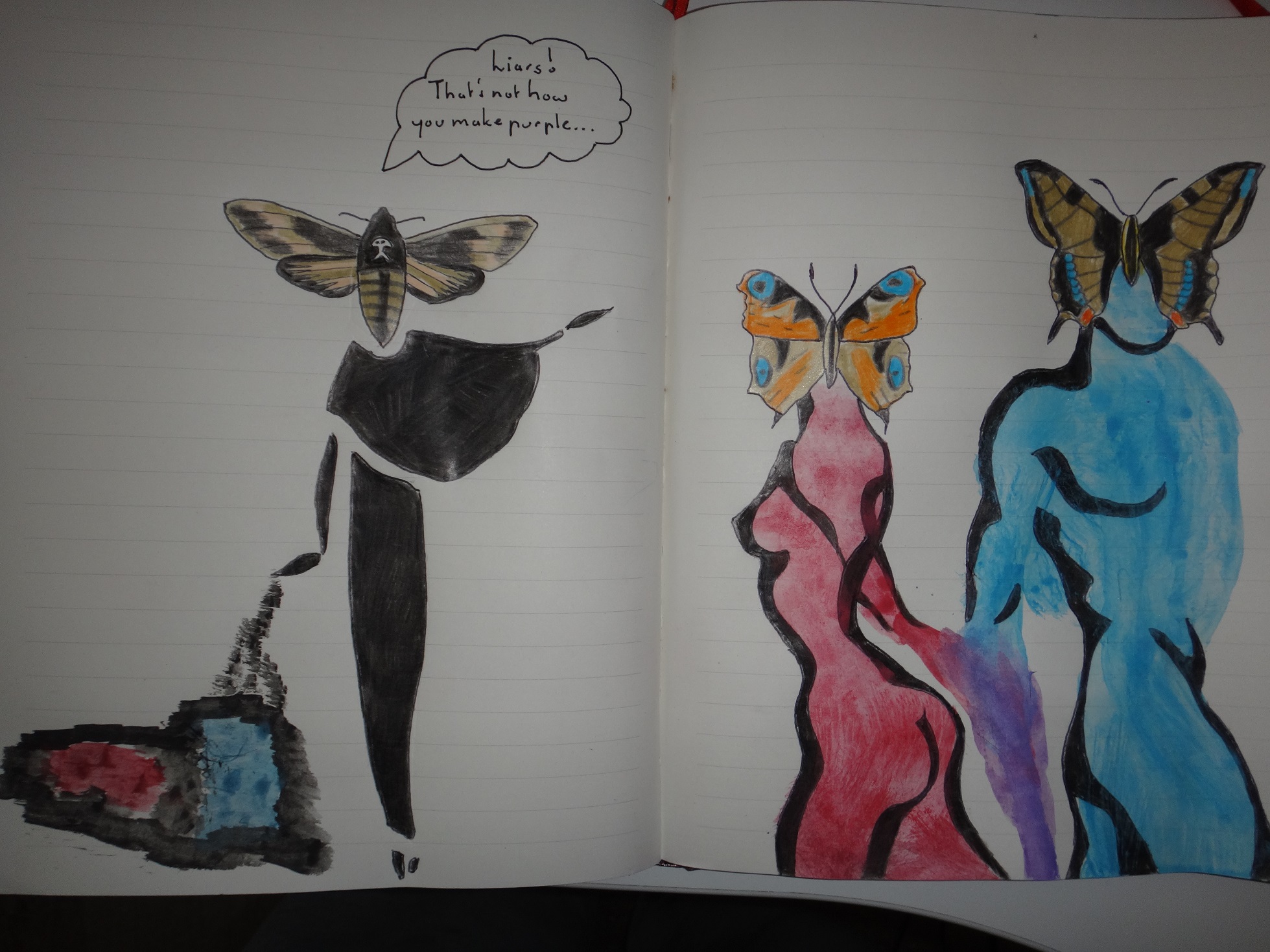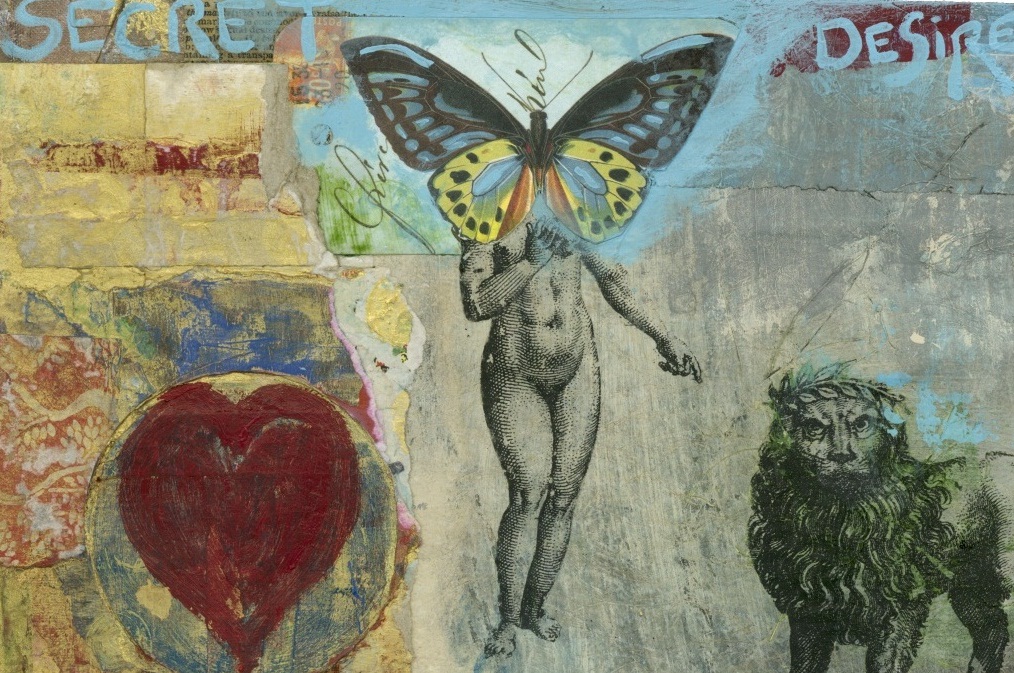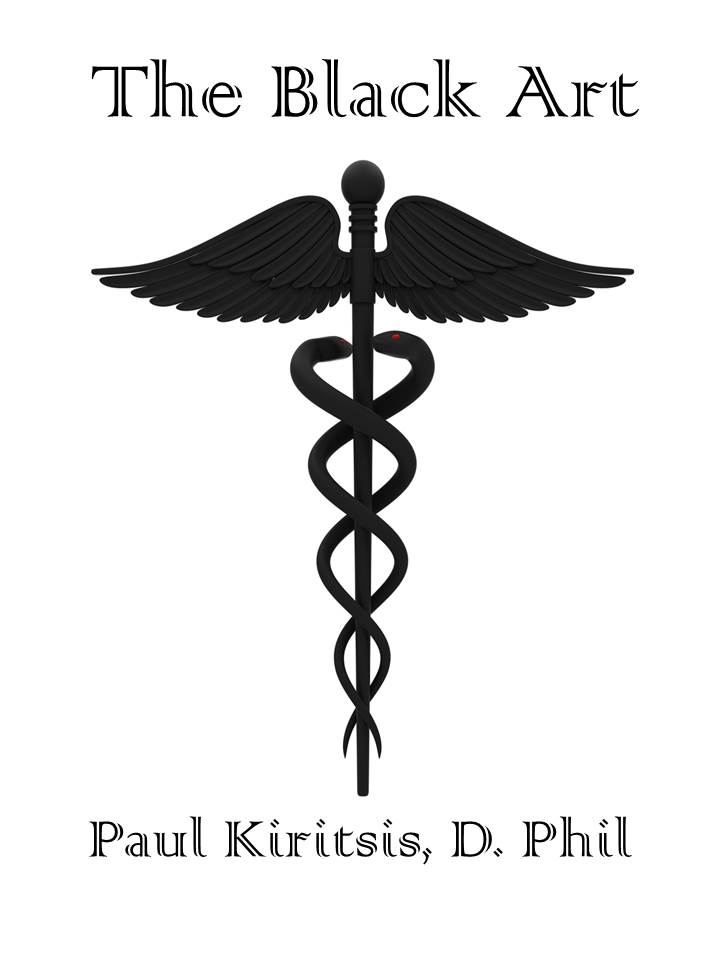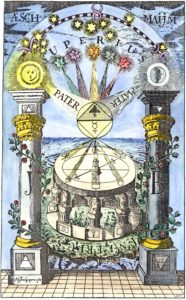
In contemporary times the word “alchemy” is most often connected with a transformation or change of some sort and has even been used in a pejorative sense by the scientific community as a synonym for “pseudoscience”, but lying deep inside the kernel of the word itself is both the potentiality of a quest and the fulfilment or culmination of that quest. It is an archetype wedged so deeply within our unconscious minds, as deeply rooted perhaps as giant cypress trees are to the windswept cliffs of Samaria Gorge in Crete, that we remain ignorant of the reality unless it is purposely brought to our attention. The same is true of the dynamic historical tradition that is loosely termed “alchemy” (rather than “alchemies”) by the scholastic establishment. For an infant the culmination of a search better known as the Philosopher’s Stone is the acquisition of a beautiful toy castle on the shelf of a local boutique store, or a Cornetto ice cream in the freezer. For a teenager, on the other hand, a year-end trip to the European Alps might signify the attainment of the Stone in the form of a lifelong desire to experience snow. For a young businesswoman it is the promotion that will relieve her of financial burdens and render her dream of attaining a designer dress possible. Alternatively, for a decrepit old man wasting away in a nursing home it is an unprecedented visit from his only son and his daughter-in-law that bequeaths a youthful livelihood and elation not felt in years. In this sense alchemy is an unconscious and diligent striving towards a condition, reality, or state of being perceived to be better or more appealing than the existing one, irrespective of whether the goal is ever attained or not.
The constituent elements of the alchemical sphere–an unconscious seeking and searching through both qualitative and quantitative means–cannot be localised to the individual, for it has existed in collective consciousness for time immemorial. Naturally, the question begging to be answered is what kind of search would persist for so long in persons from such a variegated group of disciplines as astrology, medicine, mysticism, science and philosophy? What kind of search might possess human beings to peer under stones, to pick Mother Nature apart and to subject her mineral, animal and plant matter, as well as the metals of her womb, to extreme heat and chemical processes in laboratory and other artificial settings, over and over and over again? What kind of search might prompt one to exhaust all their possible resources, avenues of critical inquiry and thought; to part with their wealth, to become estranged from their families or risk excommunication from their respective religious factions and the like? Simple really. An encounter and union with the numinous and formative force of the cosmos known as God, giving the proselyte intimate knowledge of the “hyle” of the cosmos, the prime substance or prima materia that would enable imitation of nature’s teleological striving to perfect its own created forms, engage their multiplication and allow one to become God. If the final cause in the ethereal world of being is God, the Empyrean, then its material constituent is undoubtedly gold, the eternal and incorruptible metal. The ultimate quest, then, might be seen as the perfection of nature–the World Soul or Anima Mundi–in her triune mineral, animal and vegetable aspect, the fabrication and multiplication of God’s material flesh, gold, and the discovery of an elixir or medicine which might confer the condition of immortality upon mere mortals, a condition both indigenous and exclusive to the Godhead. This fascination will undoubtedly remain at the helm of worldly imagination until we actually achieve it, or until the sands running through the hourglass of our existence expire and we are inevitably wiped from the cosmic slate of the universe.
Herein lays the practical concerns of those who have styled themselves “alchemists” through the ages. Foremost of their pursuits were chrysopoeia (gold-making) and argyropoeia (silver-making) through metallic transmutation, the preparation of drinkable gold used as an antidote against many ailments known as aurum potabile, and the discovery of the chemical signature or vital essence of all substances through a repeated cycle of distillations. Spagyria, the production of potent herbal medicines through alchemical processes, was also a popular exponent of work carried out in a laboratory setting. So too was the attempt to create artificial life forms or embryonic manikins known as homunculi in the womb of the alembic. Of course the magnum opus of all alchemical endeavours was the synthesis of the two constituents of the Philosopher’s Stone; the scintillating white and red powders that could transmute any base metal to silver and gold, respectively.
The plausibility of such transmutational feats rested precariously upon a primordial belief that belongs to the animistic and vitalistic tradition of the pre-Socratic philosophers, namely that all is one (hen to pan) and that everything, from the inanimate and inert to the animate and reflexive–is alive. In an eternal cycle of becoming and unbecoming, the formed “matter” or the individual nature of objects that makes up the shadow play of the universe is all composed of the same prima materia, the same basic substance. What differentiates the universal hierarchy of eternally-evolving “forms” from one another is the composition of their individual “souls”, to be understood through an Aristotelian teleology where the qualitative essence or “type” crystallises under a unique combination between the first four differentiating elements of the prima materia: fire, water, air and earth. Of course, the just mentioned do not denote the material elements and should not be understood as such. They are merely four principles which underpin a wholly fundamental plan to the universe. Water and earth combine to form sulphur, the combustible masculine principle, while fire and air form mercury, the fusible feminine principle. This dualistic viewpoint remained steadfast until about the sixteenth century, until Theophrastus von Hohenheim or Paracelsus (1493-1491ce) extended it to include salt, the solidifying neutral principle or conferrer of form.
As with all elements in the natural world, the physical base which underpins all metals is identical; only their invigorating essence, their “soul” differs. If the ethereal sulphur (linked to the principle of fire) represents the wholesome and immaterial “form” of God, then it must be completely unfixed and expressive in gold, whose “form” is jovial and immortal. Conversely, it must be severely inhibited and blunted in lead given that its own “form” exhibits quantitative and qualitative markers the are the antithesis of gold– heavy, lacklustre and temporal in that it is easily tarnished by air. The implication of such a philosophy is that the metallic transmutation is indeed possible through the manipulating of the metal’s respective essence or “soul”. Most alchemical treatises speak of the destruction of an old “form” of a particular substance or metal, its reduction to pure receptivity that is the materia prima, and the subsequent conferral of a purer, nobler “form” that cures it of its “sickness” and elevates it on a universal hierarchy of purposes that understands God as primal mover and cause. In such a teleological cosmogony where above and below, inner and outer, and consciousness and matter are all One in God, the chemical processes occurring in the alembic are not only mirrored in but also facilitated by analogous conditions that must be present in the “soul” of the alchemist for the endeavour to be successful. Hence we can be certain that alchemy has been a dual tradition from its humble beginnings; both a practical and chemico-operative science based on theories borrowed from Greek natural philosophy, as well as a transcendental and mystical art.
Perhaps the best exemplifier of the alchemical process is a geological phenomenon that has existed since the formation of our planet; the manner whereby a diamond comes into being. This precious stone is but an allotrope of carbon, one of the most abundant minerals on the planet. Being a base substance it is characteristically black and forms the chemical basis of all life, a notion which draws striking parallels to the nature of the prima materia which is itself the passive and dark principle of un-creation, the undifferentiated agglomeration called chaos or “hyle” (matter) from which all things take their intended form or become. Carbon is also inert and lacklustre, the dross and detritus standing at the lowest end of the divine hierarchy of purpose. The same can be said of the prima materia, which is amorphous and thus rock bottom on the evolutionary ladder of consciousness. In an event that seems to defy all logic, carbon subjected to searing heat and pressurised forces deep in chasms of the earth’s mantle magically transforms into a scintillating and supernal stone called diamond. Its defects and impurities are minimal, and it can inflict damage without suffering any physical detriments in the process. Furthermore, diamond is colourless and transparent yet it is more than able to disperse light in different colours and hues. By comparison to all other stones, it is flawless. If an eternal incarnation (or re-incarnation I should say) of this sort could come of such a sullied substance as carbon by subjecting it to intense fires within the hermetically sealed womb of earth, then shouldn’t it also be possible for the “souls” of other dross substances to be purified in an artificially created one, in the alembic and the athanor (alchemical furnace) of the laboratory, with exactly the same outcome? Deductive logic of this kind and calibre is quite indigenous to alchemical thought, a tenet vindicated by the fact that diamond is both an epithet and a synonym for the idealised concept of the Philosopher’s Stone; the alchemists sought to create indestructible “forms” through natural processes that were to be imitated, perfected and augmented.
Despite the the fact that alchemy formed a single, coherent theory over time by assimilating aspects from ancient Egyptian temple literature, Aristotelian nature philosophy, Gnosticism and Neoplatonism, the collective alchemical tradition in the Western world is as variegated and broad as the Gnostic cults of late antiquity. Alchemy has shaped and has been shaped by the ancient philosophical traditions, mysticism, the banausic and mechanical craft practices of metallurgy and glass-making, religious, political and social movements, literature and the fine arts, as well as having laid the foundations for the emergence of chemistry in the eighteenth century. This miscellaneous and dynamic tradition is rivalled only by the beliefs and concerns of the individual alchemists whom belong to it. There was never any consensus on the number of stages in the alchemical opus, or what the prima materia or first matter actually was. Some thought it was mercury, others lead, and others still niter. The Philosopher’s Stone was the ultima materia in powder form and the Elixir of Life the liquid version, though the two were often confounded. Some alchemists regarded them to be the same substance, whilst others insisted that the contrary was true.
The Greek alchemists of late antiquity who represent the inauguration of alchemy in the Western world appear to have been mystical and operative alchemists, intensely concerned with the theological implications of chemical processes in the laboratory. In the fifth century, Neoplatonist philosopher and astrologer Olympiodoros the Younger (495-570ce) engaged the tradition from Alexandria as a liberal philosophical art involving the ascension of the soul. The Arab alchemists Jabir ibn Hayyan (721-815ce) and Rhazes (865-925ce) were intensely sober, exoteric and practical in their attitudes towards the art, setting aside salvific quests for illumination and introducing the concept of a panacea or universal elixir and its preparation from mineral, plant and animal products. Both Jabir and Rhazes were of a disposition and mentality that saw alchemy as the magical gates to an alchemical world of endless feasibilities; for them, metallic transmutation was a certainty.
Standing at the frontier of the scientific revolution, Theophrastus von Hohenheim or Paracelsus (1493-1491ce) denounced this belief but engaged spagyrics and pioneered iatrochemistry, the revolutionary application of alchemy to medicine and physiology. Writing in the nineteenth century, British writer Mary Anne Atwood (1817-1910ce) argued in favour of a purely spiritual interpretation in which the soul of the alchemist was ennobled with demiurgic powers through mesmeric trances. For the Italian esotericist Julius Evola (1898-1974ce), alchemy and Hermeticism were quintessentially one. He understood the tradition in terms of a holistic cosmology which correlated physiological changes with psychological processes. A contemporary of Evola’s, the psychiatrist and founder of analytic psychology Carl Gustov Jung (1875-1961ce), interpreted the alchemical opus as an unconscious transcription of psychic interplay between conscious and unconscious elements. For Jung, the ultima materia of the Philosopher’s Stone was simply the integration of the ego and the true Self in a psychic process he described as individuation or self-actualisation. Evola rejected this as a reductionist and monocular approach towards what he perceived to be a numinous phenomenon relating to all processes of creation, not just the psychic.
At about this time operative alchemy also experienced a short-lived revival. In 1832ce, practical alchemist from France named Cyliani published a manuscript in which he claimed to have succeeded in synthesising the heavy red powder, the Red Stone. Cyliani was also apt in asserting that the scrupulous and drawn-out endeavour lasted thirty-seven years before he finally succeeded. A similar claim was made by Albert Richard Riedel (1911-1984ce), the self-styled “Frater Albertus” who founded the Paracelsus Research Society in Salt Lake City, Utah. During the time that the facility was operational, Albertus declared to have extracted the “essence” or “oil” of lead, copper and gold. When occultist and writer Israel Regardie (1907-1985ce) visited Albertus at his research centre, his purely spiritual conception of alchemy went out the window. Whatever he saw or experienced clearly exerted a profound effect on him, enough at least to reignite his faith in alchemical craft practice.

